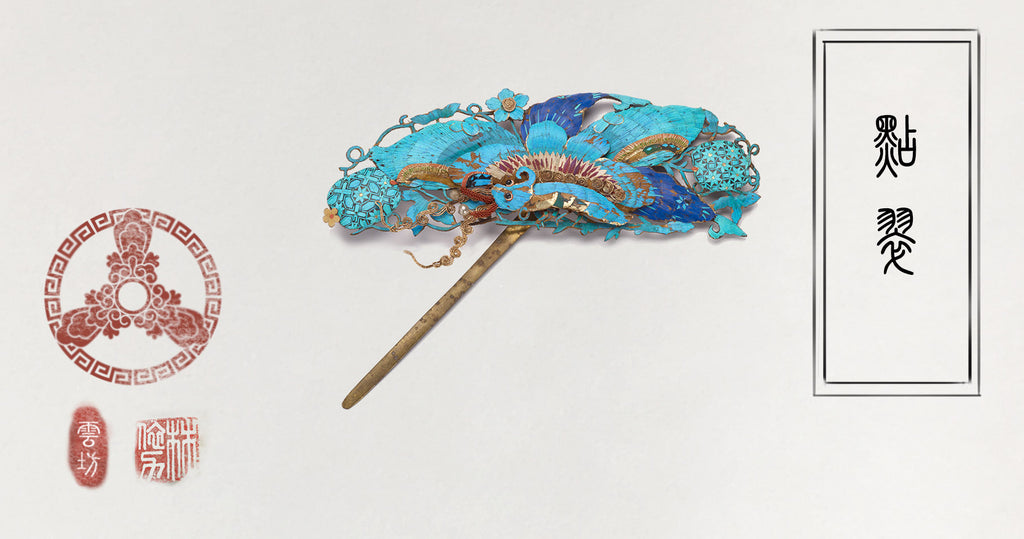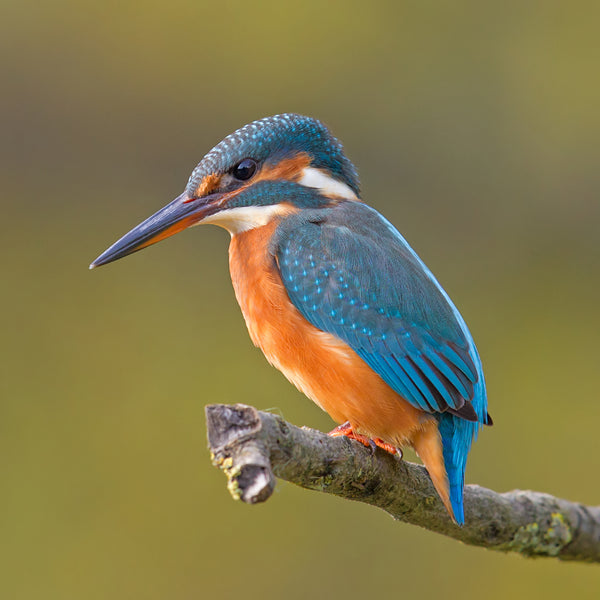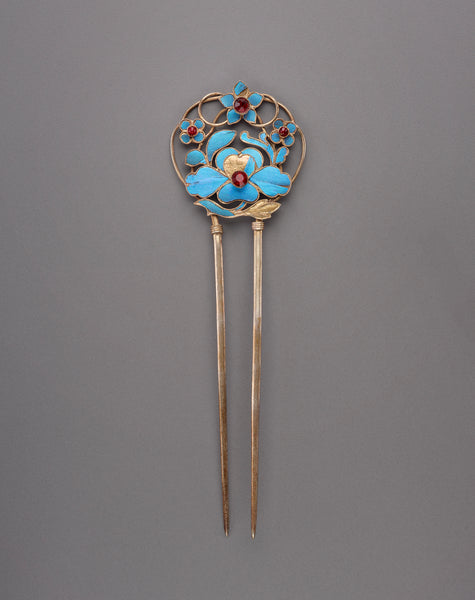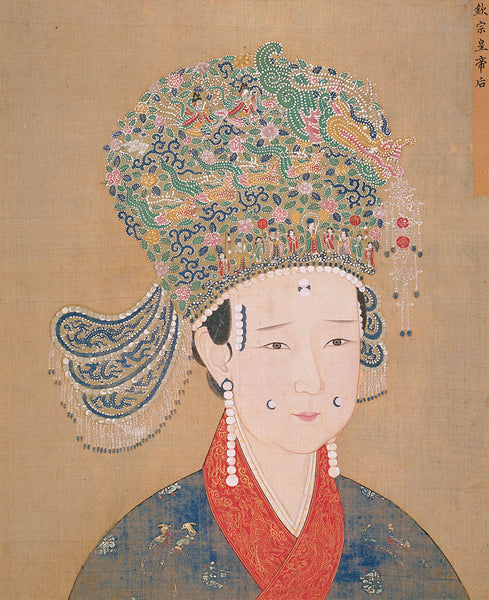8% off orders over $100, 15% off orders over $150, 20% off orders over $300.
Menu
-
- Specials
-
Types
-
Symbols
- Auspicious Cloud | Heaven
- Lotus | Purity & Elevation
- Phoenix | Rebirth and Fidelity
- The Nine | Eternity and Completeness
- Bamboo | Strength and Resilience
- Ruyi | Wish Fulfillment
- Moon | Mystery & Elegance
- Herbal Locket | Hidden Protection
- Tassel | Elegant Charm
- Butterfly and Flower | Love
- Plum Blossom | Endurance and Resilience
- Chinese Knot | Harmony, Tradition, Legacy
- Pumpkin | Prosperity & Abundance
- Pipa | Celestial Music
- Hulu Gourd | Protection and Prosperity
- Fish | Prosperity
-
Collections
- Atlantis
- Revive Your Inner Kingdom
- Auspicious Origin
- Auspicious Flower
- Udumbara Flower
- Return to Origin
- Celestial Cloud
- Elf Forest
- Gold Lotus
- Serene Lotus
- Pearl Elegance
- Radiance
- Metropolis Hermit
- The Nine
- Moon Goddess
- Tassel Elegance
- Chic Velvet Choker
- The Cloud
- Lotus Leaf
- Realm of Peace
- Four Season
-
Craftsmanship
-
Gemstones
- Pearl | Purity and Wisdom
- Jade | Stone of Heaven
- Turquoise | Protection and Healing
- Tridacna | Realm of Peace
- Lapis | Truth and Enlightenment
- Rose Quartz|Love, Healing, Compassion
- Amethyst | Clarity and Tranquility
- Amber | Vitality and Protection
- Carnelian | Courage and Vitality
- Coral | Protection and Prosperity
- Tourmaline | Energy and Balance
- Crystal | Healing and Clarity
-
Birthstone
-
Style
-
Price
-
- Jewelry Set
- Necklaces
- Earrings
- Bracelets
- Hair Jewelry
- Glasses Chains
- Rings
- Anklets
- Ornaments
- Login
-
English

8% off orders over $100, 15% off orders over $150, 20% off orders over $300.
The Kingfisher Feather Jewelry of Ancient China
April 27, 2017 3 min read 1 Comment

An imperial metalsmith plies strips of hot metal into the outline of an orchid. After the piece is cooled, cleaned, and polished, he brushes glue into its metal base. Using tweezers, he lays down one precisely trimmed azure feather, and another. Hard meets soft.
This work is called “tian-tsui,” “tsui” being the name for the kingfisher. A kingfisher, if you’ve never seen one, is a cartoonish-looking bird, all head and beak teetering upon a tiny set of feet. They live near bodies of fresh water and rivers, stalking small fish.
Its iridescent plumage looks like lapis lazuli in some lights, turquoise in others. The first time man laid eyes on this little bird, it must have looked like a gemstone peering out from the reeds.

The earliest record of tian-tsui was found in the Han Dynasty (206 B.C.– 9 A.D). It is is a supplementary jewelry technique used to accent otherwise plain metal jewelry. Though we know that the art form persisted throughout Chinese history, we hardly see any examples from pre-Ming eras, the feathers having been lost to rot. However, a sizable number of relatively well-preserved pieces survive from the Qing dynasty.
The practice of tian-tsui basically ended at the beginning of the Republic era out of a concern for the birds. But craftsmen continued recreate its vivid blue, or at least attempted to, in the form of enamel.

Restricted Fly Zone
A beauty sits at her toilette,
Her hair full of pearls and kingfisher feathers
Yet in those two cloud ornaments
She wears the taxes from several towns.
—Tang dynasty poem
It’s an understatement to say that tian-tsui is expensive.
For her wedding or special occasion, a Chinese noblewoman’s outfit would consist of a loose, richly embroidered pleated skirt and a short jacket of silk. Such an ensemble would have been topped off with a huge, heavy “Phoenix crown” of gilt copper. This headdress was covered in patterns inlaid with kingfisher feathers, gemstones, and accented with filigree phoenixes that bobbed when she moved.
Farming kingfishers is impossible because in captivity, they are known to thrash themselves to death out of sheer terror. They are also highly suspicious of people (who can blame them?), so we can safely assume that they had to be netted or trapped, no small task considering that it is only about the size of a sparrow—and yields but 28 iridescent flight feathers: 10 from each wing, and eight from the tail. Finer down feathers are also used, though they are harder to manipulate.
So why the trouble? Of all the beautiful birds in the vast land of China, why did the elite set its sights on the tiny kingfisher? Why not take the proud peacock down half a notch? Aren’t the flashes of yellow or green from a bird of paradise just as eye-catching? Perhaps its value derives from the very fact that kingfisher feathers were hard to obtain.
The Ming dynasty ushered in an era of austerity. An edict was issued stating that restricted fabrics, certain patterns, and gold thread was forbidden for average people even if they could afford it. So kingfisher, being the most opulent form of adornment, was of course prohibited to all but the highest ranking. Even after things eased up, only certain ordained individuals—empresses, concubines, and wives of high-ranking officials, for instance—were allowed the privilege.
And unlike many other forms of jewelry, tian-tsui is gendered. Most likely because of the association between phoenixes (and by extension, all birds) with the female sex, men were never known to have worn kingfisher feathers.
This article is part of the Divine Land Gemstone Compendium, a series by Yun Boutique exploring the gemstones of ancient China and their significance to Chinese culture. See the full series here. Subscribe to the email newsletter to receive future installments.
Produced and edited by Christine Lin. Researched by Ariel Tian.
Discover the elegance of the Yun Boutique Kingfisher Jewelry Collection, where the vibrant colors and textures of the kingfisher bird come to life through exquisite enamel work. Each piece is meticulously crafted to imitate the iridescent beauty of kingfisher feathers, blending rich blues, greens, and hints of gold. This collection captures the essence of nature’s splendor, adding a touch of sophistication and unique charm to any ensemble. Elevate your style with the captivating allure of the Kingfisher Jewelry Collection from Yun Boutique.
1 Response
Leave a comment
Subscribe
Sign up to get the latest on sales, new releases and more …



Fred wertheimer
April 14, 2017
I would like to buy kingfisher hairpin do you still have please let me know.thank you!